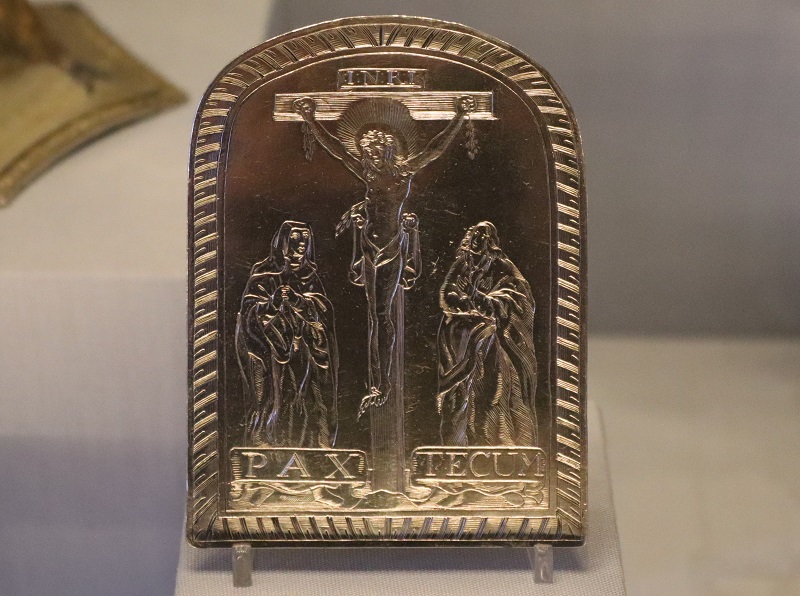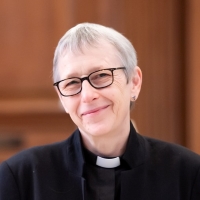One of the extraordinary privileges of living where I do, here in the very heart of London, is that I have some of the most famous museums and art galleries in the world virtually on my doorstep.
These wonderful institutions are so vast, and so packed with remarkable things, that you can quickly feel dazed and overwhelmed by the sheer quantity of artefacts and works of art on display. Indeed, as I am sure some of you may have discovered for yourselves, if you attempt to see everything, you can actually end up seeing very little and are instead reduced to roaming around rather aimlessly, flitting between the random selection of objects or paintings that happen to catch your eye.
So a lesson that I learned very early on, was the wisdom of planning such visits in advance and limiting them to one thing: one small part of a collection; or one room in a museum; or the work of one artist in a gallery. Because by attempting to cover fewer things but spend time with them properly, you can end up seeing far more, and discovering all kinds of fascinating things that otherwise you would have overlooked completely.
It was in this spirit that, over the summer I made several visits to the V&A – the Victoria and Albert Museum – where I chanced upon two little historical artefacts that I would like to tell you about this morning. Both of them are directly linked with the celebration of Holy Communion – the service that we are conducting this morning –and yet they were both completely new to me, and came from traditions other than that of the Church of England
The first was a selection of little tokens made of pewter or nickel dating from the 1800s, which came from Presbyterian churches in different parts of London. They were labelled as ‘Communion Tokens’. And a brief explanatory card revealed that a person who was granted one of these tokens was judged to be in good standing and so could be permitted to receive Holy Communion.

Now, I have to say that I was completely taken aback by the very idea of Communion Tokens – specifically the notion that those in authority within a church – whether the minister, or a group of elders – should be in a position to determine which individual members of their congregation were deemed to be persons of sufficient moral rectitude that they would be permitted to receive the Body and Blood of Christ. I found the whole idea horrifying.
Now, I should point out that is certainly the case that, in the unlikely event of there being a member of the congregation of St Bride’s who was such a notorious and unrepentant evil doer that their receiving of communion at this service would cause open scandal, there does exist a process within Canon Law which could result in the temporary excommunication of that person – but even that is a different thing altogether from me routinely deciding which of you I judged could safely be allowed to approach the altar rail at all – which works on the assumption that it is a special privilege granted to the few.
Because surely the exact opposite is the case. The whole premise upon which our celebration of the Eucharist here each Sunday is based, is that we all get it wrong all the time! We are all sinners; we are all in need of forgiveness, which is why we come here Sunday by Sunday in order to be fed: to be fed metaphorically through the gifts of music and prayer and the word of God; and to be fed literally by receiving the bread and wine of communion. And it has always seemed to me as a parish priest that if hands reach out to you, it is imperative that you do not turn them away empty. Because the very reaching out is a recognition of need. Indeed, our prayer before communion each week reminds us that we don’t receive because we are deemed worthy of it – but precisely because we are not:
We do not presume to come to this your table, merciful Lord, trusting in our own righteousness, but in your manifold and great mercies. We are not worthy so much as to gather up the crumbs under your table. But you are the same Lord whose nature is always to have mercy.
The true point of that prayer is not to suggest that we should all be grovelling in our sense of profound wickedness – but rather, that regardless of how unworthy we might be feeling, we are still welcome. We are all welcome.
I mentioned that there were two artefacts in the V&A that caught my attention recently. The second, which came from the Roman Catholic church, was a beautifully engraved silver plaque-like object, two or three inches high, dating from around 1640. It depicts the crucified Christ, with Mary and the Beloved Disciple either side of him, and it bears the Latin inscription, ‘Pax Tecum’: ‘Peace be with you.’

In mediaeval times, the principal service of the church was the Mass – but the congregation would never normally receive communion in person – only on special occasions such as Easter Day. Instead, they went to witness the sacrifice of the Mass performed on their behalf, and to look on in wonder at the miraculous transformation of the bread and wine into the body and blood of Christ. However, the tradition developed that, at a key moment in the ceremony, the priest would kiss the chalice and then ‘transfer’ the kiss onto one of these little objects – which were either made of wood or (as in this case) silver. It was called a ‘Pax’ – the Latin word for ‘Peace’. The Pax would then be passed around the congregation, who would in turn kiss it, and pass it on with the accompanying words, in Latin, ‘Peace be with you’.
You will be aware that just before I begin the prayer of consecration later in this service – I say to you all, ‘The Peace of the Lord be always with you’. At this point, in some churches (including my own previous parish), congregation members turn to one another, and greet each other. It works well in some settings as an expression of our connectedness as a community of faith, even though it is not generally our practice here at St Bride’s.
However, the thing I rather like about the idea of having a thing called a Pax that comes down from the altar to be passed round from person to person, is that it leaves us in no doubt at all that it is God’s peace that we are being invited to share – it is not primarily about being chummy to each other. Instead it would be offered, received, kissed (by which, symbolically, you take it to yourself), and then passed on to your neighbour. The Peace of God comes to us as gift; we are invited to make it our own – and then, importantly, we are required to share it with those around us.
It is really helpful to be reminded at this service, that we come here to receive gifts that are of God that are freely offered to us. We do not have to be perfect; we do not have to be holy; we do not have to get it right all the time; we just need to be aware of our need of God; our need to be fed; our need of God’s peace; our need of each other. And so we are then able to go from here out into the world, and back into our daily lives, carrying something of that renewal and that healing and that hope into everything we do.
The American Trappist monk, theologian, mystic and poet, Thomas Merton, famously wrote the following prayer. I shall leave you with his words.
My Lord God,
I have no idea where I am going.
I do not see the road ahead of me.
I cannot know for certain where it will end.
nor do I really know myself,
and the fact that I think I am following your will
does not mean that I am actually doing so.
But I believe that the desire to please you
does in fact please you.
And I hope I have that desire in all that I am doing.
I hope that I will never do anything apart from that desire.
And I know that if I do this you will lead me by the right road,
though I may know nothing about it.
Therefore will I trust you always though
I may seem to be lost and in the shadow of death.
I will not fear, for you are ever with me,
and you will never leave me to face my perils alone.
Amen.



